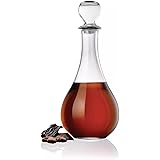A truly exceptional chicken marinade recipe is often sought by culinary enthusiasts. The creation of a deeply flavorful marinade transforms ordinary chicken into an extraordinary meal. Indeed, a marinade serves as the foundational element for achieving moistness and imparting intricate flavor profiles. Consequently, understanding the synergy of ingredients becomes paramount for culinary success.
The preceding video expertly demonstrates the preparation of a versatile and delicious chicken marinade. This specific concoction is designed to elevate chicken thighs, ensuring a memorable dining experience. Moreover, the formulation emphasizes both simplicity and profound flavor development. This comprehensive guide will further explore the principles behind this superior chicken marinade, offering expanded insights into ingredient selection and application.
Crafting the Ultimate Chicken Marinade Base
The foundation of any great marinade is its liquid component. A harmonious blend of savory and sweet elements is typically sought. The initial wet ingredients establish the core flavor matrix of this particular chicken marinade. Each component plays a specific role in enhancing the overall culinary outcome. Therefore, careful consideration is given to each addition.
The Essential Wet Ingredients Unveiled
Ketchup, though often perceived as a condiment, provides a sweet and tangy base. Its rich tomato notes contribute valuable acidity and umami. Tamari, a gluten-free alternative to soy sauce, introduces a depth of savory flavor. The fermentation process of tamari yields a complex umami profile. Garlic, a universal flavor enhancer, infuses its pungent aroma and taste. Its inclusion is indispensable for robust flavor. Honey acts as a natural sweetener, balancing the savory elements. It also aids in caramelization during cooking. Oyster sauce is a key ingredient, imparting a unique blend of sweet, savory, and umami notes. It possesses a thick consistency, which contributes to the marinade’s texture. Finally, chicken stock is utilized to provide a liquid base with inherent poultry flavor. This ingredient ensures a cohesive and well-hydrated marinade. Alternatively, vegetable stock or even water may be substituted, though flavor intensity might be adjusted.
Elevating Flavor with Strategic Spice Blends
Beyond the wet components, the judicious selection of spices is critical. Spices introduce layers of aroma, heat, and complexity. A well-chosen spice blend can transform a good marinade into a truly exceptional one. Furthermore, spices often react synergistically with other ingredients, unlocking deeper flavors.
The Impact of Bushman’s Pepper Pot on Marinade Dynamics
While black pepper is a standard seasoning, the video highlights Bushman’s Pepper Pot. This particular spice blend is lauded for its ability to introduce unparalleled depth and intensity. Its unique composition undoubtedly contributes a distinctive warmth and aromatic quality. The addition of such a specialized blend elevates the entire flavor profile. Moreover, it creates a unique signature for this chicken marinade. Its complexity far surpasses that of simple black pepper. The blend is carefully incorporated, ensuring even distribution throughout the marinade mixture. This meticulous process ensures consistent flavor delivery with every bite.
Advanced Marinade Principles for Chicken Thighs
The effectiveness of a marinade is dictated by several factors. These include the acidity, enzymatic activity, and the composition of its ingredients. Chicken thighs, with their higher fat content and connective tissue, benefit immensely from proper marination. This process contributes to both tenderness and flavor absorption. Consequently, understanding these principles is crucial for optimal results.
Understanding Marinade Science
Marinades function through a combination of acidification and flavor penetration. Acidic components, such as those found in ketchup, help to tenderize meat fibers. This action occurs by denaturing proteins on the meat’s surface. However, excessive acidity can lead to a “cooked” texture. Therefore, balance is key. Salt, present in tamari and oyster sauce, aids in the diffusion of flavors into the meat. It draws moisture out, then allows flavored liquid to be reabsorbed. Sugars, like honey, contribute to browning and flavor development. These sugars caramelize under heat, creating a rich, savory crust. The viscosity of the marinade also plays a role in adhesion. A thicker chicken marinade adheres better to the chicken, ensuring more flavor is transferred.
Optimal Marination Techniques for Superior Results
For chicken thighs, a marination period of at least two to four hours is generally recommended. Overnight marination, extending up to eight to twelve hours, can yield even more profound flavor infusion. However, it is imperative to avoid excessively long marination times. Extended exposure to acidic marinades can compromise the texture of the chicken. The chicken should be completely submerged in the marinade. A sealed container or resealable bag is ideal for this purpose. Furthermore, refrigeration is essential throughout the marination process. This maintains food safety standards and prevents bacterial growth. Prior to cooking, excess marinade may be patted off the chicken. This ensures a crispier skin texture, if desired. The remaining marinade, if cooked thoroughly, can often be reduced to form a complementary sauce. This maximizes flavor and minimizes waste.







